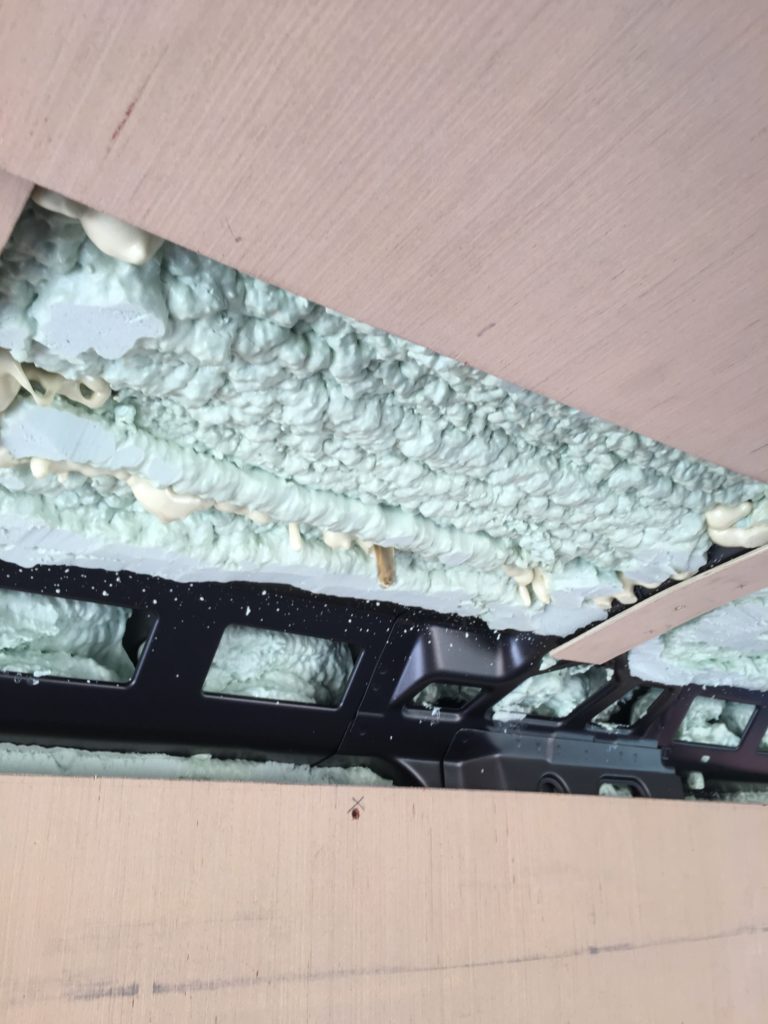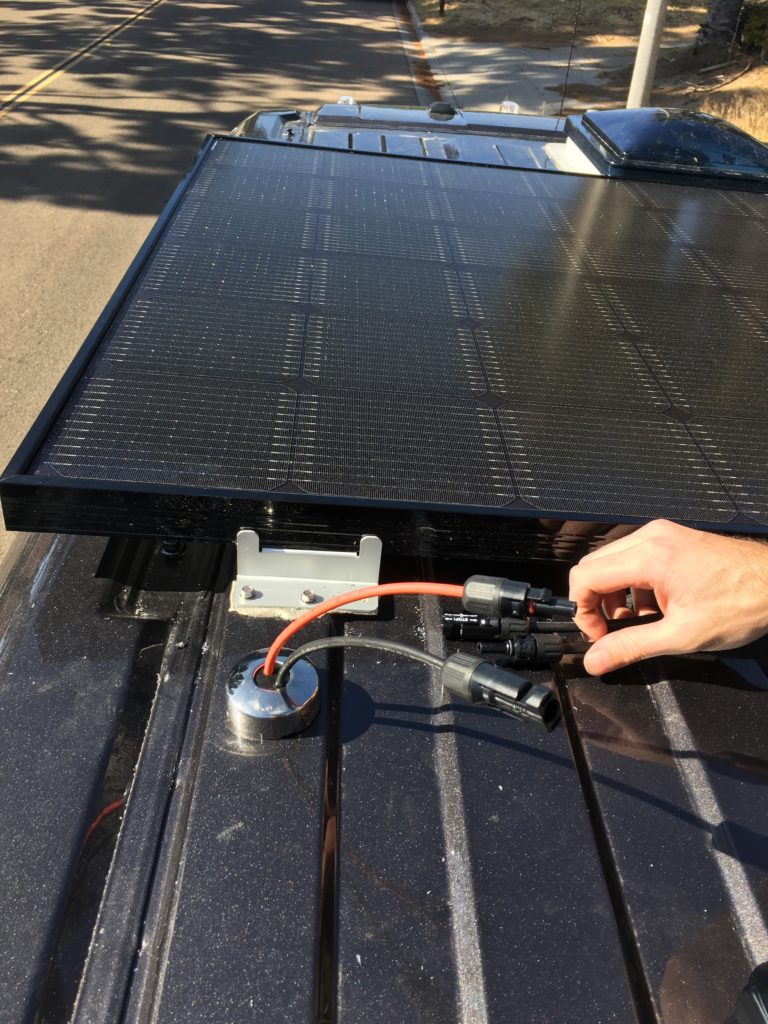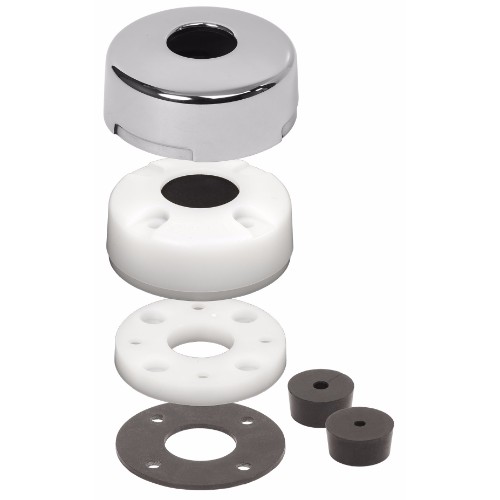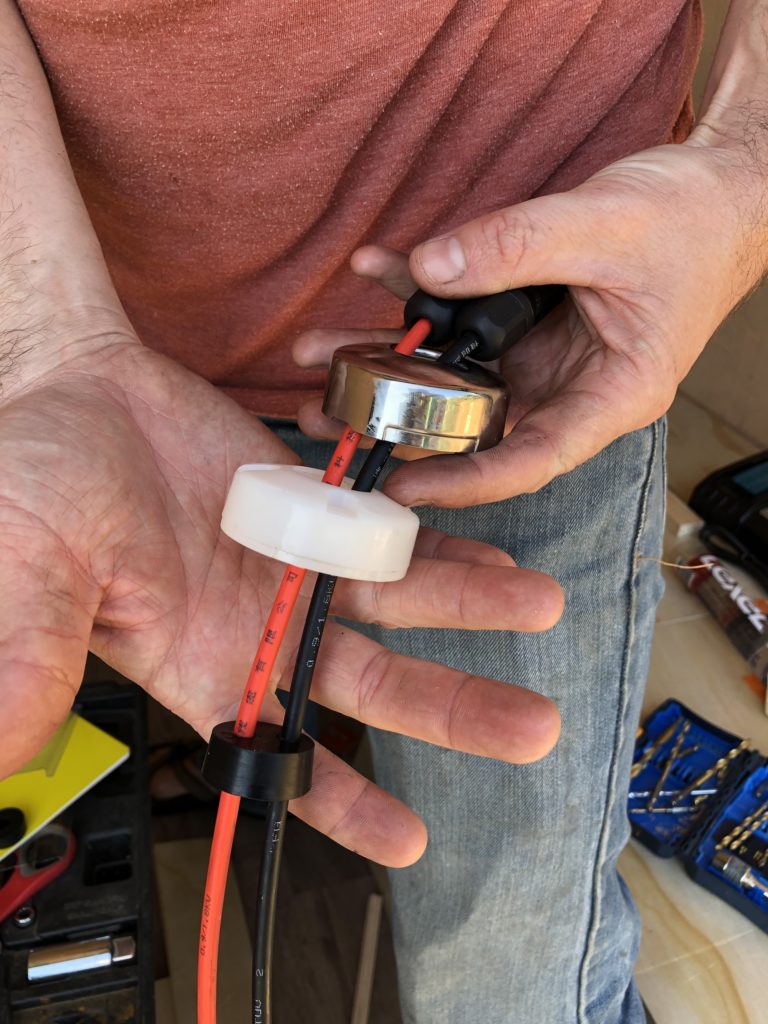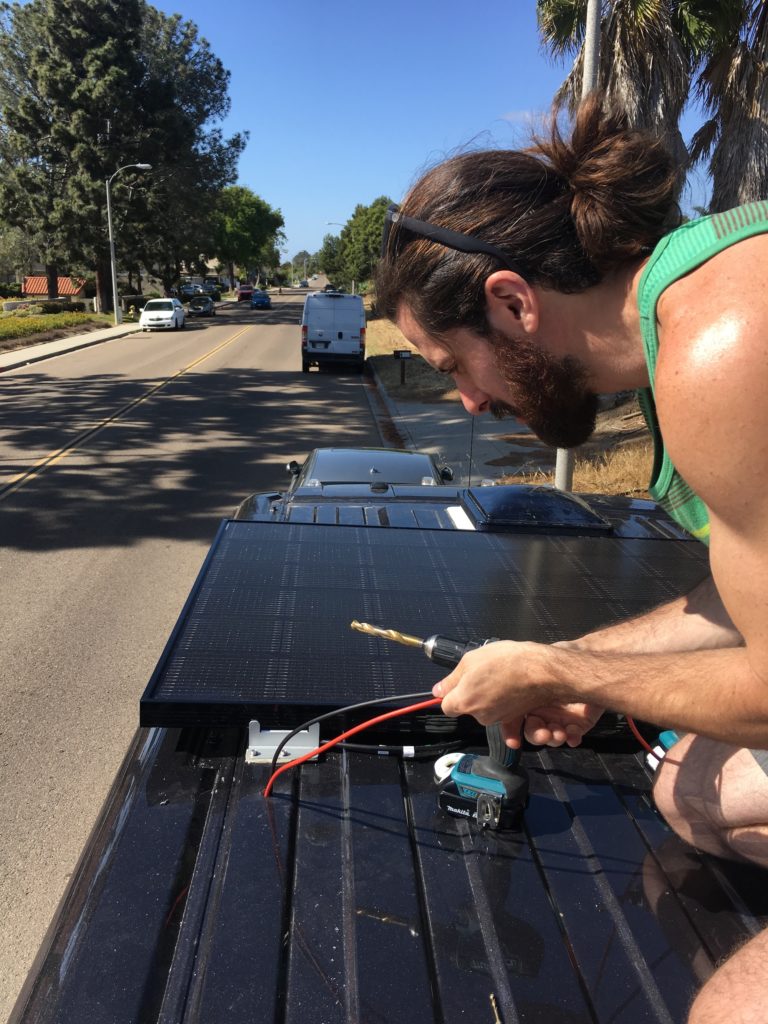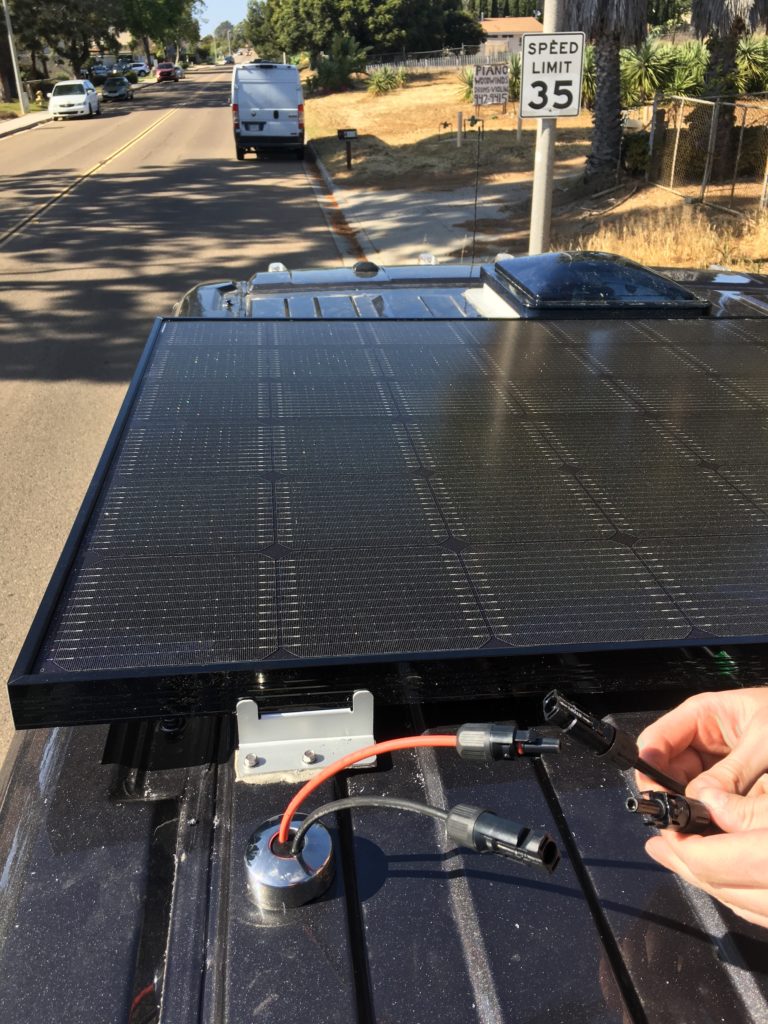
Summary:
“Scotty, I need more Power!”
If you enjoy the comforts of 20th century appliances, a reliable power source is essential for your van build. However, wiring your van and supplying it with consistent power can be tricky. Luckily, after installing a simple solar panel, you can run your van’s appliances in an environmentally-friendly way, and never worry about paying an electricity bill again.
We’re currently finishing our article on how to organize the basics of your energy grid, but for now, this article will discuss how to install a LG 320 Watt Panel that has the following dimensions: 66.4″ x 40″ x 1.57″.
Materials:
Installing your new solar panel is a pretty straight forward process. Here’s a list of necessary tools that will make the process run smoothly from the start:
- Driver-Drill
- ¼ – 1 inch drill bits
- Blue Sea CableClam
- Putty and stainless steel screws from our Fan Install Kit
- Mounting bracket/screw kit
- 12G positive/negative wire
- Water
- Tape Measure
Prep/Planning:
Location of Solar Panel:
Consider how many solar panels will fit on your van’s roof, and where they will best fit. The solar panel’s locations will vary depending on what model of vehicle you’re driving, but try to center the panels efficiently.
Time of Day:
Installing your solar panel during the day is no problem, however, if you are as excited as I was, you might have the urge to hook up the MC4 connectors to the live wire you put through to the inside of your van. Keep in mind solar panels do not have an off switch, so as long as they are in the sun they are generating power. That means you have a live wire on your hands if you don’t have it hooked up to your charge controller. Leave this unplugged for now. You’ll have power soon enough!
As you setup your electrical system, you’ll want to work backward so that the solar panel connection is last.
Execution:
Below we’ll outline the steps we took for installing the panel behind our fan-tastic vent (read about installing a fan-tastic vent here). For my build specifically, I wanted to make sure I had enough space for a second panel if I needed more recharging power.
Measuring:
The Promaster roof has gutters that run the length of the van. We were able to align the brackets onto the higher portion of that gutter. Depending on your brackets, and depending on the solar panel’s area for where those brackets sit, this might not be as achievable. Measure from each side of the front of the van to make sure you are able to avoid any of the structural beams found on the van.
Alignment:
Make sure the panel is aligned parallel to your fan if you have one, or square with the sides of your van. This isn’t a crucial step, but it just makes things look nicer and your screws will enter through the roof at a predictable spot. We suggest leaving the putty off at this point so that it isn’t sticking to your van.
Apply Putty:
Once aligned, apply the putty to the bottom of the brackets. This is used for controlling leakage/rust to your roof and keeps everything tight.
Pre-drill before screwing:
We’d recommend drilling some pilot holes to allow your screws to sink easier. Line up according to the raised portion of the gutter on the van roof. Once you’ve completed your pilot hole, drive one screw into each bracket. We recommend doing opposing sides to keep alignment proper.
Install Cable Clam (several steps to consider):
Next step to installing the panel is to get your wires dropped into the van. We chose to keep the MC4 connectors outside the van and run another set of wires to the charge controller.
Location for Wire Drop Through the Roof
The wires should be dropped in a location, if possible, closest to your solar charge controller. This is where most of your electrical setup should be stored. We went pretty close to the driver’s side wall so that we could feed them from the closet area to the solar charger. We were able to measure using the screws used for mounting the panel. We knew we weren’t going to hit any struts or drop the wire close to a sharp edge that could cut into the housing over time.
Once you’ve got your spot picked and you’ve triple checked to make sure you won’t be hitting anything vital, start with a 1/8 pilot hole before going up to the 5/8-3/4 hole you’ll need to fit the wires into.
Drill Pilot Holes in the Rubber Stopper
Mounting the Base of the Cable Clam
Now we can mount the base of the clam onto the van around the hole we drilled for the wire. Mark the holes after measuring, then drill your pilot holes, making sure the drill bit doesn’t run or move.
Assemble the pieces of the clam onto the wire
Start with the housing decorative cover, (if your clam came with one), then the white clam itself and then the rubber stopper. The rubber stopper is going to be very snug on the wire, so we used a little Dawn Dish Soap to help it along. Make sure your stopper is oriented the right way as well. We put it on wrong. Live and learn!
Drop The Wires
The time has come! Drop those wires into the hole and screw the 2 pieces of the clam together.
Finished Product:
And you’re done! Don’t forget that your panel is live and cranking watts, so don’t skip ahead and connect the MC4 connectors until everything else is connected. This is, however, a good time to check and make sure the appropriate connections are on the correct wires.
Review:
Good news, the panel hasn’t blown away yet. That was my biggest worry. In terms of usage, I’m pulling really high wattage with this setup (250W+ on exposed days). I do live in southern California and get great sunlight. Stay tuned for more information about a typical day’s energy use, other electrical installation projects, and a full review of this solar panel.




